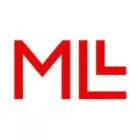Wirecard has proven once again that stellar growth and stunning revenues do not always mean that a company is well-founded. Although the board of directors has responsibilities towards the shareholders and the latter have certain information rights, organizational failure and mismanagement remain often unnoticed until it's too late. Additional corporate governance laying down the fundamentals on management and organization is therefore vital for long-term success, to ensure that the checks and balances among the stakeholders involved (shareholders, founders, and employees) are appropriate.
Good corporate governance is not only relevant for traditional equity financing, but also for alternative ways of funding, in particular for projects aiming at creating new decentralized ecosystems by using distributed ledger technology. Contributors in DLT-projects very often provide funding without getting any rights similar to shareholders in a stock corporation. The relationship is mainly based on trust and is very fragile. Organizational failures or mismanagement by the project founders often result in delays of the planned project, or even a partial or total loss of the funding provided, and leave the contributors without any rights of control or legal remedies.
It is necessary that the governance models are looked at more closely and discussed more widely. In the following, We will be presenting a decentralized community-enabling governance model #decenGov for DLT-ecosystem projects by using a Swiss association acting as the core of the ecosystem.
PCIR-Allocation
An association is operated by its bodies. Swiss association law offers great flexibility in defining bodies and allocating rights and obligations for each body. In contrast to committees that are usually created by the board, bodies are an independent instance and are free to act within the powers allocated to them in the articles of association.
By law, an association must have at least a board, the general assembly, and auditors (if required by law because of exceeding the mandatory thresholds), which, however, are not sufficient for DLT-projects from a governance perspective. To manage the responsibility towards the participants of the ecosystem and to have well-balanced powers, we recommended creating expert circles as additional bodies e.g. treasury, membership admission, governance & nominations, ethics, technology, or grants & projects. Once the bodies have been defined, the rights and responsibilities for each body must be defined. For this, the PCIR-model can be useful, as it separates the power to propose, consult, implement, and review (PCIR). Implementing the PCIR-model helps to make sure that each body's actions are always perceived and verified.
Remote Voting
Appropriate governance, however, requires more than just introducing different bodies. Bodies only make sense if they are appropriately represented when decisions are rendered. Participants in ecosystems for DLT-projects are oftentimes located all around the world. Physical meetings are in particular not useful for the general assembly. The same applies to live phone- or video conferences because of the different time zones in which participants reside. To ensure that the general assembly is adequately represented by the members of the association, it is key to include in the articles of association the concept of remote voting (Urabstimmung) and the applicable majority requirements. The former obliges the board to send invitations out to the members within due time and grant them a right for counterproposals before the remote voting process opens. Without having remote voting explicitly included in the articles of association, the general assembly can only render decisions in writing by unanimity.
Balanced Voting
If voting rights in the general assembly of the association are represented by cryptographic tokens and multiple of tokens entitle to multiple votes (not 1 member 1 vote), it is recommended to include a mechanism to overcome the vulnerabilities of traditional voting mechanisms such as insignificance of individual but highly bought-in voters, tyranny, excessive vote-buying and failing to give proportional weight to association members' interests. A possible approach is the use of quadratic voting. Quadratic voting is a method of collective decision-making that strives to find a middle ground between one-person-one-vote and one-token-one-vote systems.
Majority Requirements
The flexibility of the Swiss association law allows the creation of very flexible or rigid structures by defining majority requirements for decisions by the association' bodies. The higher the thresholds, the more bodies that must be involved, the less likely it becomes that the association will deviate from the original purpose. In case of full rigidity, the association structure becomes very similar to a foundation, with the main difference, however, that the association members together with the other bodies (as the case may be according to the articles) keep a final say. A Swiss association structured based on the #decenGov model is therefore perfectly working as a steering vehicle for a DLT-projects to ensure sustainable development of the respective ecosystems in a democratically, well-balanced, and decentralized manner.
Information:
#decenGov is a model developed by the HOPR Association together with FRORIEP. If you want to learn more about #decenGov, please get in touch with us.
The content of this article is intended to provide a general guide to the subject matter. Specialist advice should be sought about your specific circumstances.


